Sarah L. Johnson's Blog, page 67
October 9, 2017
The Research Journey, a guest post from Barbara Ridley, author of When It's Over
Barbara Ridley, whose debut novel When It's Over is just out from She Writes Press, is here with an essay about her research discoveries.
~
The Research JourneyBarbara Ridley
 When I embarked on the journey of writing my novel When It’s Over, I had no idea how much research would be involved, where that research would lead me, or how much fun it would be. I was writing a novel based on my mother’s experience as a refugee during World War II, and I had recorded an oral history with her twenty years before her death, so I figured I had most of what I needed. Plus, as a child growing up in Britain in the 1950s and ’60s, I was raised on so many anecdotes about “The War," I often felt as if I had lived through it myself.
When I embarked on the journey of writing my novel When It’s Over, I had no idea how much research would be involved, where that research would lead me, or how much fun it would be. I was writing a novel based on my mother’s experience as a refugee during World War II, and I had recorded an oral history with her twenty years before her death, so I figured I had most of what I needed. Plus, as a child growing up in Britain in the 1950s and ’60s, I was raised on so many anecdotes about “The War," I often felt as if I had lived through it myself.
As I began to write, however, I realized my knowledge just scratched the surface. There was so much I didn’t know. When did rationing go into effect? When did the bombing start? How did ordinary people cope with the war dragging on for 6 years? Maybe because my father had been a historian, it was in my blood somehow: I felt compelled to understand what life was like and to get the details right.
So I researched. I read books, both fiction and non-fiction, found wonderful resources online, and did some good old-fashioned on-the-ground research in the British Airways Museum at London’s Heathrow Airport, the “Mass Observation” archives at the University of Sussex, and walking the streets of Prague, Paris and London—the settings used in the novel.
But then I made a remarkable discovery that changed the focus of the second half of the novel: I came upon boxes of letters that my father had written during the last two years of the war. By then it was clear that Hitler would be defeated, so the burning question became: what kind of society should be created out of the ruins of war?
I had always known the Labour Party had won the election of 1945, with a huge majority, and had gone on to pass landmark legislation that established the National Health Service and other pillars of the welfare state. But how was it that Churchill, the heroic war leader, suffered such a huge political defeat immediately after the victory parades were over? My father was active in the progressive political movement of the time, and his letters provided unique insights, which I was able to incorporate into the novel.

[click to see larger image in a new window]
~
 credit: Limor Inbar
Barbara Ridley
was raised in England but has lived in California for more than thirty years. After a successful career as a nurse practitioner, which included publication in numerous professional journals, she is now focused on creative writing. Her work has appeared in literary journals, such as The Writers Workshop Review, Still Crazy, Ars Medica, The Copperfield Review and BLYNKT. This is her first novel.
credit: Limor Inbar
Barbara Ridley
was raised in England but has lived in California for more than thirty years. After a successful career as a nurse practitioner, which included publication in numerous professional journals, she is now focused on creative writing. Her work has appeared in literary journals, such as The Writers Workshop Review, Still Crazy, Ars Medica, The Copperfield Review and BLYNKT. This is her first novel.
Ridley lives in the San Francisco Bay Area with her partner and her dog, and she has one adult daughter, of whom she is immensely proud. She enjoys hiking, backpacking and cross-country skiing in the mountains. Visit her online at barbararidley.com, Facebook, and Twitter.
~
The Research JourneyBarbara Ridley
 When I embarked on the journey of writing my novel When It’s Over, I had no idea how much research would be involved, where that research would lead me, or how much fun it would be. I was writing a novel based on my mother’s experience as a refugee during World War II, and I had recorded an oral history with her twenty years before her death, so I figured I had most of what I needed. Plus, as a child growing up in Britain in the 1950s and ’60s, I was raised on so many anecdotes about “The War," I often felt as if I had lived through it myself.
When I embarked on the journey of writing my novel When It’s Over, I had no idea how much research would be involved, where that research would lead me, or how much fun it would be. I was writing a novel based on my mother’s experience as a refugee during World War II, and I had recorded an oral history with her twenty years before her death, so I figured I had most of what I needed. Plus, as a child growing up in Britain in the 1950s and ’60s, I was raised on so many anecdotes about “The War," I often felt as if I had lived through it myself. As I began to write, however, I realized my knowledge just scratched the surface. There was so much I didn’t know. When did rationing go into effect? When did the bombing start? How did ordinary people cope with the war dragging on for 6 years? Maybe because my father had been a historian, it was in my blood somehow: I felt compelled to understand what life was like and to get the details right.
So I researched. I read books, both fiction and non-fiction, found wonderful resources online, and did some good old-fashioned on-the-ground research in the British Airways Museum at London’s Heathrow Airport, the “Mass Observation” archives at the University of Sussex, and walking the streets of Prague, Paris and London—the settings used in the novel.
But then I made a remarkable discovery that changed the focus of the second half of the novel: I came upon boxes of letters that my father had written during the last two years of the war. By then it was clear that Hitler would be defeated, so the burning question became: what kind of society should be created out of the ruins of war?
I had always known the Labour Party had won the election of 1945, with a huge majority, and had gone on to pass landmark legislation that established the National Health Service and other pillars of the welfare state. But how was it that Churchill, the heroic war leader, suffered such a huge political defeat immediately after the victory parades were over? My father was active in the progressive political movement of the time, and his letters provided unique insights, which I was able to incorporate into the novel.

[click to see larger image in a new window]
~
 credit: Limor Inbar
Barbara Ridley
was raised in England but has lived in California for more than thirty years. After a successful career as a nurse practitioner, which included publication in numerous professional journals, she is now focused on creative writing. Her work has appeared in literary journals, such as The Writers Workshop Review, Still Crazy, Ars Medica, The Copperfield Review and BLYNKT. This is her first novel.
credit: Limor Inbar
Barbara Ridley
was raised in England but has lived in California for more than thirty years. After a successful career as a nurse practitioner, which included publication in numerous professional journals, she is now focused on creative writing. Her work has appeared in literary journals, such as The Writers Workshop Review, Still Crazy, Ars Medica, The Copperfield Review and BLYNKT. This is her first novel.Ridley lives in the San Francisco Bay Area with her partner and her dog, and she has one adult daughter, of whom she is immensely proud. She enjoys hiking, backpacking and cross-country skiing in the mountains. Visit her online at barbararidley.com, Facebook, and Twitter.
Published on October 09, 2017 05:00
October 7, 2017
The Seed Woman by Petra Durst-Benning, a novel of the seed trade in mid-19th century Germany
 I enjoy reading novels that focus on “microhistories” – that is, a narrow aspect of social history and its impact on the surrounding world. Petra Durst-Benning’s The Seed Woman, first published in 2005 in German and recently translated by Edwin Miles, narrows its gaze on the seed-traders of Gönningen in the Swabian Mountains of southwestern Germany.
I enjoy reading novels that focus on “microhistories” – that is, a narrow aspect of social history and its impact on the surrounding world. Petra Durst-Benning’s The Seed Woman, first published in 2005 in German and recently translated by Edwin Miles, narrows its gaze on the seed-traders of Gönningen in the Swabian Mountains of southwestern Germany. Many residents of this small village made their living in the seed trade. These enterprising men and women used various methods of travel to distribute their goods on established routes (their “Samenstrich,” or seed-line) around the country, throughout Europe, and even abroad.
The book will whisk you away on its characters’ journeys on foot and via cart and aboard ship to the Netherlands and across the Black Sea to distant Odessa. Farmers and gardeners depended on this regular commerce to grow fruit and vegetable crops and plant heirloom bulbs to beautify their environment.
The novel’s heroine is Hannah Brettschneider, an innkeeper’s daughter from Nuremberg who had become pregnant after a one-night stand with one of the hotel guests. When she makes her way to Gönningen to find her baby’s father, Helmut Kerner, he’s astonished to see her again. Her presence creates instant tension, because Helmut’s already agreed to marry the beautiful Seraphine. A woman with her head in the clouds, Seraphine had been told from a young age that she was a child brought by the fairies… and she actually believes it.
Pulled in two directions, Helmut ultimately decides his responsibility lies with Hannah and her child. What’s more, Hannah’s cheerful personality meshes well with his, and as they get to know each other better, they make a good couple. Helmut’s engagement to Seraphine gets broken off, but he doesn’t seem to mind; with her disconnection from reality, I couldn't blame him. However, Seraphine refuses to give up on Helmut. Her disturbed, obsessive behavior sends the book down many dramatic, often ridiculous avenues.
The storyline would have been more believable if Seraphine’s personality had been more nuanced. Despite the issues with character development, the rest of the plot was interesting enough that I kept turning the pages. I enjoyed viewing the changing of the seasons along with the Kerner family, learning more about the seed trade, and seeing Hannah’s ongoing transformation from city girl to “seed woman.”
The Seed Woman will be published next week by AmazonCrossing in pb and ebook. This was a Read Now title on NetGalley, and thanks to the publisher for enabling access to it.
Published on October 07, 2017 05:30
October 5, 2017
A gallery of autumn historical fiction reads

Julie Wright, the lovely blogger at the Hungry Bookworm, invited me to write a guest post for her site. I came up with a gallery of autumn-themed reads - six historical novels incorporating the theme of autumn, either literally or symbolically.
Jump on over to the Hungry Bookworm to take a look, and thanks to Julie for the opportunity!
Published on October 05, 2017 07:48
September 28, 2017
Playlist for The Language of Trees, a guest post by Steve Wiegenstein
Steve Wiegenstein, whose novel The Language of Trees was published on Tuesday by Blank Slate Press, has contributed an essay that really appealed to me, as both a reader of fiction set in the past and a fan of traditional folk and old-time music. I was familiar with about half of the songs he describes below in his playlist, and I'll be checking out the rest. The Language of Trees is third in the Daybreak series, set amid a Utopian community in 19th-century Missouri, and it can also stand alone. I'd reviewed the first book, Slant of Light, on this site a few years ago. Welcome, Steve!
~
Playlist: The Language of TreesSteve Wiegenstein
 Say “historical novel” to someone, and they’re likely to think of swords and swooning, which is why I’ve always been ambivalent about the phrase when it’s applied to my novels. There are no swords and essentially no swooning in my books; instead, I’m interested in everyday people swept up in extraordinary events, and how they cope with the tides of history. These are universal themes, and I’m particularly drawn to the odd tandem of optimism and exploitation that so often characterizes the American experience. So I listen to music that connects me to the struggles and triumphs of ordinary Americans. I immerse myself in period music when I’m writing and editing because doing so helps me recreate the mentality of people of the era, and in addition, it helps me work into the vocabulary of the times. Songs, letters, speeches, and diary entries all help make my diction accurate, but songs in particular help make it poetic. Here are some of the songs on my playlist while I was creating The Language of Trees.
Say “historical novel” to someone, and they’re likely to think of swords and swooning, which is why I’ve always been ambivalent about the phrase when it’s applied to my novels. There are no swords and essentially no swooning in my books; instead, I’m interested in everyday people swept up in extraordinary events, and how they cope with the tides of history. These are universal themes, and I’m particularly drawn to the odd tandem of optimism and exploitation that so often characterizes the American experience. So I listen to music that connects me to the struggles and triumphs of ordinary Americans. I immerse myself in period music when I’m writing and editing because doing so helps me recreate the mentality of people of the era, and in addition, it helps me work into the vocabulary of the times. Songs, letters, speeches, and diary entries all help make my diction accurate, but songs in particular help make it poetic. Here are some of the songs on my playlist while I was creating The Language of Trees.
Hard Times Come Again No More – Nanci Griffith
As I mentioned, I’m interested in the struggles of ordinary people and how those struggles reflect the concerns of the time, and few songs of the 19th century do that as well as Stephen Foster’s “Hard Times Come Again No More.” People critique Foster’s maudlin and occasionally racist lyrics, but he also came up with songs of genius, and this is one of them. The “pale drooping maiden who toils her life away” is an image all too familiar in the America of that age, especially as the Industrial Revolution spread across the country and the concentration of production in factories, many of which employed young women because of their reliability and low wages, became widespread. As a native of the burgeoning industrial area around Pittsburgh, Foster would have seen this trend firsthand. Of the hundreds of recorded versions, I like Nanci Griffith’s, as she combines a great authenticity of presentation with a modern voice. The song is both old and new in her take.
Lily of the West – Van Colbert
There’s a lot of obsessive and seemingly hopeless love in my latest book, so I found myself listening to traditional music that reflects that thinking, of which there is an abundance. I try to listen only to period music that I can be sure my characters would have known (with a few exceptions, noted below), so songs that were identified in Vance Randolph’s great collection Ozark Folksongs get high priority. One of those, and one of the starkest, is “Lily of the West,” sometimes called “Flora.” There’s an eerie matter-of-factness in the way the narrator describes his fixation with Flora, her casual betrayal, and his murder of her new lover. The minor key and relentless speed of the song add to its effectiveness. Like most American folksongs, it’s an import from the British Isles, in this case Ireland, which helps explain the odd phrasing of some of the verses. Most people know it from the two Chieftains versions of the song, or the early Bob Dylan rendition, but I’m partial to Van Colbert’s unadorned version.
Fair and Tender Ladies – June Carter Cash
Male fixation is a recurring theme in folk music; female endangerment, alas, is another, and its frequent companion. The endangerment can be physical, spiritual, or economic. Perhaps it’s most bluntly stated in the opening lines of “Hard Is the Fortune”: “Hard is the fortune of all womankind; / They’re always controlled, they’re always confined. / Controlled by their parents until they are wives, / Then slaves to their husbands the rest of their lives.” When Josephine angrily tells Bridges in The Language of Trees that his promises are like the stars on a summer’s morning, she’s quoting “Fair and Tender Ladies,” an Appalachian song with antecedents in 17th-century England. I know it had reached the Ozarks, because in the 1940 book Ballads and Songs Collected by the Missouri Folk-Lore Society a contributor recalls hearing it in 1906. June Carter Cash’s version is appropriately plaintive, and you get to hear her autoharp playing as a bonus. Another lovely version is the one by Bread and Bones.
Little Maggie – Doc Watson
I may be fudging on whether “Little Maggie” was a period piece during the time of the novel (1887-88), but music historians have identified family members of this tune since the late 1800s. So I don’t mind claiming it as a song of the era. It’s a great addition to the “songs of hopeless love” category; I first heard it on a recording by Doc Watson, and that’s still my favorite, although you hear the Stanley Brothers’ version more often. I spent several years trying to get my guitar playing to be as clean and effortless as Doc Watson’s until I realized I didn’t have the talent for it. But that’s all right—few do! I was fortunate to see Doc Watson perform a couple of years before he died, and he had passed the fast licks on to younger members of his band, but his voice was as distinctive as ever.
Mercy O Thou Son of David – Mount Pisgah Primitive Baptist Church congregation
When Barton Braswell starts “The Lord’s Barn” in The Language of Trees, this is the type of hymn I envision them singing: shape-note hymns, created so that even those who could not read music could follow their parts in hymnals such as Southern Harmony, Union Harmony, and The Sacred Harp. This song can be found in William Walker’s Southern Harmony from 1835. Shape-note singing, unearthly and unforgettable, uses a mix-and-match approach to tunes and lyrics; the lyrics for this hymn are from 1779, and although any tune with an 8-7-8-7 meter can be used with them, a frequent choice is a tune called “Restoration,” composed in 1758. My Unitarian-Universalist friends will recognize Restoration as the tune for their hymn “This Old World,” from which I take the title of my second book.
The Lakes of Pontchartrain – Andy M. Stewart
In The Language of Trees, Ambrose Gardner sings this song and recollects that his commanders in the Civil War had sometimes banned it and other songs like it as being bad for morale. Such incidents did in fact happen during the war, with the immensely popular “Lorena” a frequent victim of censorship. Sad songs about lost love just don’t pep up the boys for battle. The lyrics are American, but the tune is Scottish, so I like hearing the late great Scottish balladeer Andy M. Stewart do his version of the song.
The Farmer Is the Man – Pete Seeger
As Charley Pettibone brings his prisoner to town in The Language of Trees, he grows concerned by the man’s cursing, which he knows will bother the townsfolk as they ride to the jail. So he sings to drown it out, and the song he chooses is “The Farmer Is the Man,” an anthem of the Grange movement of the Midwest. The growing rural/urban divide of the late 19th Century is an important theme in this book, and “The Farmer Is the Man” illustrates that divide perfectly. The song draws a vivid contrast between the farmer, who is dressed shabbily, whose wagon is broken down, and who “lives on credit till the fall,” and the essential nature of his work. The lyrics are a much more earthy restatement of a song by “the singing evangelist,” Knowles Shaw, who was popular during the 19th century. And who better to deliver a song of agrarian protest than Pete Seeger?
The Arkansas Traveler – Jimmie Driftwood
My grandfather was a square dance fiddler, whose fiddle (with rattlesnake rattle inside) still remains in the family. “The Arkansas Traveler,” which Josephine helps Jimmy Pettibone play in The Language of Trees, is one of the first tunes any fiddler or banjo player would learn. Today you can find a lot of instrumental versions, but few with the song’s mischievous lyrics, which in my mind is a shame. The dynamic between Traveler and Farmer, rube and city slicker, is multilayered and eternal, and after a while we can’t tell who is outfoxing whom. Jimmy Driftwood was a great champion of Ozark folk music, so it’s only appropriate to listen to his version of the song. Another favorite of my grandfather’s was “Rye Whiskey,” and I recall his glee when he would reach the verse in which “Hiccup! Oh golly, how bad I do feel” is repeated six times.
Overture to The Flying Dutchman – London Festival Orchestra
Adolphus Kessler, the visiting geologist in The Language of Trees, is a devotee of opera, and for a German Chicagoan who fancies himself culturally current, that could only mean Wagner. Riots did indeed occasionally break out at Wagner concerts, as Kessler mentions, and although I’m sure there was plenty of aspiration without comprehension in the public’s Wagner frenzy during the late 19th Century, one can’t listen to certain Wagner pieces (such as this early one) without imagining the marvelous sweep of emotions that would have come over an audience upon first hearing this insanely ambitious piece of music.
Angel Band (a.k.a. “My Latest Sun Is Sinking Fast”) – Jimmy Bullard/Beston Barnett
I first came across this song in 1972, when my mom brought home the album “Music of the Ozarks” from the library. It was produced by National Geographic magazine, and I have to say, it felt a little strange to see a national magazine putting out a compilation of music from my own home area. I felt quite exotic for a while. We were old-hymnal people in our church, favoring Fanny J. Crosby and the like, so this kind of unadorned, rather mystical hymn was foreign to me. When the angels gather around the dying narrator, and he declares, “I hear the noise of wings,” a chill comes through me that doesn’t go away for a long while. Most people nowadays are familiar with this song through Ralph Stanley’s version on the O Brother, Where Art Thou? soundtrack, although, alas, it omits the crucial verse with the noise of wings, as does Johnny Cash’s version. Too creepy for some, I suppose. I know nothing about Jimmy Bullard, the singer of that original experience, except that he lived in Timbo, Arkansas, and did a wonderful job on that now-unavailable vinyl LP. In my novel, the hymn is sung the way it’s intended to be—around a deathbed. Since Jimmy Bullard’s version can’t be found, and Ralph Stanley’s version is so familiar, try listening to Beston Barnett, who incredibly enough turns the mournful wail that we’re accustomed to into a joyful, reggae celebration of heaven-going.
 author Steve WiegensteinPretty Bird – Hazel Dickens
author Steve WiegensteinPretty Bird – Hazel Dickens
Staying on the “chills” theme for a moment, anyone who doesn’t get chills listening to Hazel Dickens’ “Pretty Bird” needs—I’m not sure what they need, maybe a heart transplant. This song ties in with the earlier theme of a woman’s longing for freedom, coupled with the aching, mournful delivery of a true Appalachian artist. This is not period music; Dickens composed the song in 1973. But oh my goodness, it rings with the truth of eternity. Listen, and then go buy that “Hazel and Alice” album. You know you want to.
Tam Lin and Clyde’s Water – Anaïs Mitchell and Jefferson Hamer
I had Mitchell and Hamer’s Child Ballads EP pretty much on continuous play while writing the last four chapters of my novel, for several reasons. First, these two songs in particular have thematic connections. “Clyde’s Water” (which they title as “Clyde Waters”) has the powerful imagery of overwhelming love that struggles against all impediments, human and natural, and in addition it has one of the scariest drowning scenes in all of music. “Tam Lin,” one of the weirdest and most magical of the Child ballads, has a moment that affirms the idea that holding on obsessively to the one you love, against all reason and good sense, might actually work, and instead of ending up with a fierce beast, you find yourself with a shivering, naked man to wrap up and take home. So it has a thread of hope among all the strangeness. Finally, Mitchell and Hamer stay true to the ancient roots of the songs while recasting them in a contemporary way. They capture the old in the new, and that action speaks to me as I seek to do the same in my creative work.
~
Steve Wiegenstein is the author of Slant of Light (2012) and This Old World (2014). Slant of Light was the runner-up for the David J. Langum Prize in American Historical Fiction, and This Old World was a shortlisted finalist for the M.M. Bennetts Award in Historical Fiction. Steve grew up in the Missouri Ozarks and worked there as a newspaper reporter before entering the field of higher education. He now lives in Columbia, Missouri. Visit him online at https://stevewiegenstein.wordpress.com.
~
Playlist: The Language of TreesSteve Wiegenstein
 Say “historical novel” to someone, and they’re likely to think of swords and swooning, which is why I’ve always been ambivalent about the phrase when it’s applied to my novels. There are no swords and essentially no swooning in my books; instead, I’m interested in everyday people swept up in extraordinary events, and how they cope with the tides of history. These are universal themes, and I’m particularly drawn to the odd tandem of optimism and exploitation that so often characterizes the American experience. So I listen to music that connects me to the struggles and triumphs of ordinary Americans. I immerse myself in period music when I’m writing and editing because doing so helps me recreate the mentality of people of the era, and in addition, it helps me work into the vocabulary of the times. Songs, letters, speeches, and diary entries all help make my diction accurate, but songs in particular help make it poetic. Here are some of the songs on my playlist while I was creating The Language of Trees.
Say “historical novel” to someone, and they’re likely to think of swords and swooning, which is why I’ve always been ambivalent about the phrase when it’s applied to my novels. There are no swords and essentially no swooning in my books; instead, I’m interested in everyday people swept up in extraordinary events, and how they cope with the tides of history. These are universal themes, and I’m particularly drawn to the odd tandem of optimism and exploitation that so often characterizes the American experience. So I listen to music that connects me to the struggles and triumphs of ordinary Americans. I immerse myself in period music when I’m writing and editing because doing so helps me recreate the mentality of people of the era, and in addition, it helps me work into the vocabulary of the times. Songs, letters, speeches, and diary entries all help make my diction accurate, but songs in particular help make it poetic. Here are some of the songs on my playlist while I was creating The Language of Trees. Hard Times Come Again No More – Nanci Griffith
As I mentioned, I’m interested in the struggles of ordinary people and how those struggles reflect the concerns of the time, and few songs of the 19th century do that as well as Stephen Foster’s “Hard Times Come Again No More.” People critique Foster’s maudlin and occasionally racist lyrics, but he also came up with songs of genius, and this is one of them. The “pale drooping maiden who toils her life away” is an image all too familiar in the America of that age, especially as the Industrial Revolution spread across the country and the concentration of production in factories, many of which employed young women because of their reliability and low wages, became widespread. As a native of the burgeoning industrial area around Pittsburgh, Foster would have seen this trend firsthand. Of the hundreds of recorded versions, I like Nanci Griffith’s, as she combines a great authenticity of presentation with a modern voice. The song is both old and new in her take.
Lily of the West – Van Colbert
There’s a lot of obsessive and seemingly hopeless love in my latest book, so I found myself listening to traditional music that reflects that thinking, of which there is an abundance. I try to listen only to period music that I can be sure my characters would have known (with a few exceptions, noted below), so songs that were identified in Vance Randolph’s great collection Ozark Folksongs get high priority. One of those, and one of the starkest, is “Lily of the West,” sometimes called “Flora.” There’s an eerie matter-of-factness in the way the narrator describes his fixation with Flora, her casual betrayal, and his murder of her new lover. The minor key and relentless speed of the song add to its effectiveness. Like most American folksongs, it’s an import from the British Isles, in this case Ireland, which helps explain the odd phrasing of some of the verses. Most people know it from the two Chieftains versions of the song, or the early Bob Dylan rendition, but I’m partial to Van Colbert’s unadorned version.
Fair and Tender Ladies – June Carter Cash
Male fixation is a recurring theme in folk music; female endangerment, alas, is another, and its frequent companion. The endangerment can be physical, spiritual, or economic. Perhaps it’s most bluntly stated in the opening lines of “Hard Is the Fortune”: “Hard is the fortune of all womankind; / They’re always controlled, they’re always confined. / Controlled by their parents until they are wives, / Then slaves to their husbands the rest of their lives.” When Josephine angrily tells Bridges in The Language of Trees that his promises are like the stars on a summer’s morning, she’s quoting “Fair and Tender Ladies,” an Appalachian song with antecedents in 17th-century England. I know it had reached the Ozarks, because in the 1940 book Ballads and Songs Collected by the Missouri Folk-Lore Society a contributor recalls hearing it in 1906. June Carter Cash’s version is appropriately plaintive, and you get to hear her autoharp playing as a bonus. Another lovely version is the one by Bread and Bones.
Little Maggie – Doc Watson
I may be fudging on whether “Little Maggie” was a period piece during the time of the novel (1887-88), but music historians have identified family members of this tune since the late 1800s. So I don’t mind claiming it as a song of the era. It’s a great addition to the “songs of hopeless love” category; I first heard it on a recording by Doc Watson, and that’s still my favorite, although you hear the Stanley Brothers’ version more often. I spent several years trying to get my guitar playing to be as clean and effortless as Doc Watson’s until I realized I didn’t have the talent for it. But that’s all right—few do! I was fortunate to see Doc Watson perform a couple of years before he died, and he had passed the fast licks on to younger members of his band, but his voice was as distinctive as ever.
Mercy O Thou Son of David – Mount Pisgah Primitive Baptist Church congregation
When Barton Braswell starts “The Lord’s Barn” in The Language of Trees, this is the type of hymn I envision them singing: shape-note hymns, created so that even those who could not read music could follow their parts in hymnals such as Southern Harmony, Union Harmony, and The Sacred Harp. This song can be found in William Walker’s Southern Harmony from 1835. Shape-note singing, unearthly and unforgettable, uses a mix-and-match approach to tunes and lyrics; the lyrics for this hymn are from 1779, and although any tune with an 8-7-8-7 meter can be used with them, a frequent choice is a tune called “Restoration,” composed in 1758. My Unitarian-Universalist friends will recognize Restoration as the tune for their hymn “This Old World,” from which I take the title of my second book.
The Lakes of Pontchartrain – Andy M. Stewart
In The Language of Trees, Ambrose Gardner sings this song and recollects that his commanders in the Civil War had sometimes banned it and other songs like it as being bad for morale. Such incidents did in fact happen during the war, with the immensely popular “Lorena” a frequent victim of censorship. Sad songs about lost love just don’t pep up the boys for battle. The lyrics are American, but the tune is Scottish, so I like hearing the late great Scottish balladeer Andy M. Stewart do his version of the song.
The Farmer Is the Man – Pete Seeger
As Charley Pettibone brings his prisoner to town in The Language of Trees, he grows concerned by the man’s cursing, which he knows will bother the townsfolk as they ride to the jail. So he sings to drown it out, and the song he chooses is “The Farmer Is the Man,” an anthem of the Grange movement of the Midwest. The growing rural/urban divide of the late 19th Century is an important theme in this book, and “The Farmer Is the Man” illustrates that divide perfectly. The song draws a vivid contrast between the farmer, who is dressed shabbily, whose wagon is broken down, and who “lives on credit till the fall,” and the essential nature of his work. The lyrics are a much more earthy restatement of a song by “the singing evangelist,” Knowles Shaw, who was popular during the 19th century. And who better to deliver a song of agrarian protest than Pete Seeger?
The Arkansas Traveler – Jimmie Driftwood
My grandfather was a square dance fiddler, whose fiddle (with rattlesnake rattle inside) still remains in the family. “The Arkansas Traveler,” which Josephine helps Jimmy Pettibone play in The Language of Trees, is one of the first tunes any fiddler or banjo player would learn. Today you can find a lot of instrumental versions, but few with the song’s mischievous lyrics, which in my mind is a shame. The dynamic between Traveler and Farmer, rube and city slicker, is multilayered and eternal, and after a while we can’t tell who is outfoxing whom. Jimmy Driftwood was a great champion of Ozark folk music, so it’s only appropriate to listen to his version of the song. Another favorite of my grandfather’s was “Rye Whiskey,” and I recall his glee when he would reach the verse in which “Hiccup! Oh golly, how bad I do feel” is repeated six times.
Overture to The Flying Dutchman – London Festival Orchestra
Adolphus Kessler, the visiting geologist in The Language of Trees, is a devotee of opera, and for a German Chicagoan who fancies himself culturally current, that could only mean Wagner. Riots did indeed occasionally break out at Wagner concerts, as Kessler mentions, and although I’m sure there was plenty of aspiration without comprehension in the public’s Wagner frenzy during the late 19th Century, one can’t listen to certain Wagner pieces (such as this early one) without imagining the marvelous sweep of emotions that would have come over an audience upon first hearing this insanely ambitious piece of music.
Angel Band (a.k.a. “My Latest Sun Is Sinking Fast”) – Jimmy Bullard/Beston Barnett
I first came across this song in 1972, when my mom brought home the album “Music of the Ozarks” from the library. It was produced by National Geographic magazine, and I have to say, it felt a little strange to see a national magazine putting out a compilation of music from my own home area. I felt quite exotic for a while. We were old-hymnal people in our church, favoring Fanny J. Crosby and the like, so this kind of unadorned, rather mystical hymn was foreign to me. When the angels gather around the dying narrator, and he declares, “I hear the noise of wings,” a chill comes through me that doesn’t go away for a long while. Most people nowadays are familiar with this song through Ralph Stanley’s version on the O Brother, Where Art Thou? soundtrack, although, alas, it omits the crucial verse with the noise of wings, as does Johnny Cash’s version. Too creepy for some, I suppose. I know nothing about Jimmy Bullard, the singer of that original experience, except that he lived in Timbo, Arkansas, and did a wonderful job on that now-unavailable vinyl LP. In my novel, the hymn is sung the way it’s intended to be—around a deathbed. Since Jimmy Bullard’s version can’t be found, and Ralph Stanley’s version is so familiar, try listening to Beston Barnett, who incredibly enough turns the mournful wail that we’re accustomed to into a joyful, reggae celebration of heaven-going.
 author Steve WiegensteinPretty Bird – Hazel Dickens
author Steve WiegensteinPretty Bird – Hazel Dickens Staying on the “chills” theme for a moment, anyone who doesn’t get chills listening to Hazel Dickens’ “Pretty Bird” needs—I’m not sure what they need, maybe a heart transplant. This song ties in with the earlier theme of a woman’s longing for freedom, coupled with the aching, mournful delivery of a true Appalachian artist. This is not period music; Dickens composed the song in 1973. But oh my goodness, it rings with the truth of eternity. Listen, and then go buy that “Hazel and Alice” album. You know you want to.
Tam Lin and Clyde’s Water – Anaïs Mitchell and Jefferson Hamer
I had Mitchell and Hamer’s Child Ballads EP pretty much on continuous play while writing the last four chapters of my novel, for several reasons. First, these two songs in particular have thematic connections. “Clyde’s Water” (which they title as “Clyde Waters”) has the powerful imagery of overwhelming love that struggles against all impediments, human and natural, and in addition it has one of the scariest drowning scenes in all of music. “Tam Lin,” one of the weirdest and most magical of the Child ballads, has a moment that affirms the idea that holding on obsessively to the one you love, against all reason and good sense, might actually work, and instead of ending up with a fierce beast, you find yourself with a shivering, naked man to wrap up and take home. So it has a thread of hope among all the strangeness. Finally, Mitchell and Hamer stay true to the ancient roots of the songs while recasting them in a contemporary way. They capture the old in the new, and that action speaks to me as I seek to do the same in my creative work.
~
Steve Wiegenstein is the author of Slant of Light (2012) and This Old World (2014). Slant of Light was the runner-up for the David J. Langum Prize in American Historical Fiction, and This Old World was a shortlisted finalist for the M.M. Bennetts Award in Historical Fiction. Steve grew up in the Missouri Ozarks and worked there as a newspaper reporter before entering the field of higher education. He now lives in Columbia, Missouri. Visit him online at https://stevewiegenstein.wordpress.com.
Published on September 28, 2017 05:00
September 25, 2017
News from the Historical Novel Society - new anthology, forthcoming books, UK conference
There's been some recent news forthcoming from the Historical Novel Society that's of potential interest to other historical fiction fans, so I thought I'd spread the word here.
 Distant Echoes, a new short story anthology with 19 selections that were the winners and runners-up in recent HNS competitions, is published today by Corazon Books in paperback and ebook (for more info, see Amazon US and Amazon UK).
Distant Echoes, a new short story anthology with 19 selections that were the winners and runners-up in recent HNS competitions, is published today by Corazon Books in paperback and ebook (for more info, see Amazon US and Amazon UK).
From the press release: "Distant Echoes brings you vivid voices from the past. This haunting anthology explores love and death, family and war. From the chilling consequences of civil and world war, to the poignant fallout from more personal battles, these stories will stay with you long after the last page."
The contents include the following. Some of the authors are previously published novelists and short story writers whose names you may recognize, while others are up-and-coming writers.
House of Wild Beasts by Anne Aylor (winner of the Historical Novel Society Short Story Award 2014)
Fire on the Water by Vanessa Lafaye (winner of the HNSOxford16 Short Story Award)
The Half-Marked Warrior by Nicky Moxey
Disunion by Richard Buxton
The Fat Lady Sings by Jeffrey Manton
For the Love of Megan by Mari Griffith
Ice Bear by S. Pitt
Salt by Lorna Fergusson (winner of the HNSLondon14 Short Story Award)
The Happy Island by Christopher M. Cevasco
The Sharing of a Husband by Anna Belfrage
Behind the Curtain by Patricia Hilton-Johnson
Wolfgang by Dorita Avila
The Holdup by Cj Fosdick
The Man with No Hands by Anne Aylor
Too Late Beloved by Jasmina Svenne
The Hungry Sails by Yvonne Lyon
Souvenirs from Kiev by Chrystyna Lucyk-Berger
The Innkeeper’s Banquet by Lisa Kesteven
1654 by L C Tyler
The short story is an unfairly underrated form in the historical fiction world. If you're looking for good examples of how historical fiction writers can skillfully develop historical atmosphere, character, and plot within this shorter format, check out the ones within the anthology.
~
The dates and locale for the next UK-based Historical Novel Society conference have been announced: it will take place on Aug 24-26, 2018 at the Westerwood Hotel just outside Glasgow in Scotland. I plan to be there and will register as soon as it opens up (reportedly sometime in November). This will be a smaller conference than previous due to space limitations at the venue, so for anyone interested, consider registering early.
~
Lastly, I've been busy compiling a guide to forthcoming historical novels for 2018 on the HNS website, while the children's and YA forthcoming guide is put together by Fiona Sheppard. Both guides contain listings of upcoming releases going through next summer, so you'll find plenty for consideration for your TBRs.
 Distant Echoes, a new short story anthology with 19 selections that were the winners and runners-up in recent HNS competitions, is published today by Corazon Books in paperback and ebook (for more info, see Amazon US and Amazon UK).
Distant Echoes, a new short story anthology with 19 selections that were the winners and runners-up in recent HNS competitions, is published today by Corazon Books in paperback and ebook (for more info, see Amazon US and Amazon UK). From the press release: "Distant Echoes brings you vivid voices from the past. This haunting anthology explores love and death, family and war. From the chilling consequences of civil and world war, to the poignant fallout from more personal battles, these stories will stay with you long after the last page."
The contents include the following. Some of the authors are previously published novelists and short story writers whose names you may recognize, while others are up-and-coming writers.
House of Wild Beasts by Anne Aylor (winner of the Historical Novel Society Short Story Award 2014)
Fire on the Water by Vanessa Lafaye (winner of the HNSOxford16 Short Story Award)
The Half-Marked Warrior by Nicky Moxey
Disunion by Richard Buxton
The Fat Lady Sings by Jeffrey Manton
For the Love of Megan by Mari Griffith
Ice Bear by S. Pitt
Salt by Lorna Fergusson (winner of the HNSLondon14 Short Story Award)
The Happy Island by Christopher M. Cevasco
The Sharing of a Husband by Anna Belfrage
Behind the Curtain by Patricia Hilton-Johnson
Wolfgang by Dorita Avila
The Holdup by Cj Fosdick
The Man with No Hands by Anne Aylor
Too Late Beloved by Jasmina Svenne
The Hungry Sails by Yvonne Lyon
Souvenirs from Kiev by Chrystyna Lucyk-Berger
The Innkeeper’s Banquet by Lisa Kesteven
1654 by L C Tyler
The short story is an unfairly underrated form in the historical fiction world. If you're looking for good examples of how historical fiction writers can skillfully develop historical atmosphere, character, and plot within this shorter format, check out the ones within the anthology.
~
The dates and locale for the next UK-based Historical Novel Society conference have been announced: it will take place on Aug 24-26, 2018 at the Westerwood Hotel just outside Glasgow in Scotland. I plan to be there and will register as soon as it opens up (reportedly sometime in November). This will be a smaller conference than previous due to space limitations at the venue, so for anyone interested, consider registering early.
~
Lastly, I've been busy compiling a guide to forthcoming historical novels for 2018 on the HNS website, while the children's and YA forthcoming guide is put together by Fiona Sheppard. Both guides contain listings of upcoming releases going through next summer, so you'll find plenty for consideration for your TBRs.
Published on September 25, 2017 05:00
September 23, 2017
Orphan Sisters by Lola Jaye, a compelling saga about a family of Nigerian heritage in '50s London
 Spanning three decades, Lola Jaye’s Orphan Sisters is an addictive, emotionally fulfilling read that focuses on a topic – black history – too rarely touched upon in the English saga genre. Pardon the cliché, but I stayed up too late to finish it.
Spanning three decades, Lola Jaye’s Orphan Sisters is an addictive, emotionally fulfilling read that focuses on a topic – black history – too rarely touched upon in the English saga genre. Pardon the cliché, but I stayed up too late to finish it. In 1958, sisters Lanre and Mayowa Cole, aged 7 and 5, and their mother, Adanya, emigrate from Nigeria to Britain in search of a more prosperous life. At the London airport, they joyfully reunite with their father, Tayo, who's worked hard to prepare a new home for them.
Tayo is an optimist, and their loving parents try to shield the girls from their difficulties adjusting to their new surroundings. The climate is cold, and their apartment is cramped; the culture shock is difficult enough, but they also encounter overt racism and anti-immigrant bias.
Without straying from Lanre's viewpoint, the novel also lets readers see her parents’ reactions. Although she doesn’t understand the “Keep Britain White” pamphlet she finds on the ground, her mother definitely does. The girls take the names Lana and May for school in an attempt to help them fit in.
Tayo dies unexpectedly, leaving Adanya desperate and, in her grief, unable to care for her children, who are essentially raised by her best friend, their white neighbor “Aunty Ginny.” When Adanya’s condition declines further, the girls are sent, along with their baby sister Tina, to a children’s home. Expectations are low for black children, and they have only basic necessities and an indifferent staff, so Lana takes it upon herself to ensure her sisters remain as a family. Then lighter-skinned Tina is adopted...
It’s so easy to empathize with both sisters, who have very different perspectives: Lana, who assumes a motherly role despite her youth, and May, who takes refuge in books and closes herself off emotionally, even from Lana. The novel excels at depicting their complex relationship as well as Lana’s long-term friendship with Clifton, a boy from school.
Some sagas add contrivances to the plot in an attempt to heighten tension, but here the scenarios never feel less than real. Their separate paths forward are tough, yet this is a read filled with determination and hope as Lana and May establish places for themselves in a world that often seeks to hold them back. Orphan Sisters also explores elements of the girls’ Nigerian culture, and how their hairstyles, accent, and choice of name come to symbolize their desire to blend in or proudly set themselves apart, as they so choose.
The ending brings the story full circle and provides answers to any lingering questions. There were a few times I would have liked to know what year it was; a minor complaint. I unhesitatingly recommend it to anyone interested in social history or simply seeking an engrossing novel.
Orphan Sisters was published by Ebury Press, an imprint of Penguin Random House UK, in paperback this past Thursday (£5.99); thanks to the publisher for approving my NetGalley access.
Published on September 23, 2017 05:00
September 19, 2017
A spoiler-free look at Keep the Home Fires Burning, the literary sequels to the Home Fires TV series
 Many historical novels have been transformed into films and TV miniseries. Some of these films carry the novel’s characters beyond the original literary storyline. However, do you know of any other instances in which a popular TV series has been canceled, but the plot is continued in the form of a historical novel?
Many historical novels have been transformed into films and TV miniseries. Some of these films carry the novel’s characters beyond the original literary storyline. However, do you know of any other instances in which a popular TV series has been canceled, but the plot is continued in the form of a historical novel? This is the case with Home Fires, set in the fictional English village of Great Paxford in Cheshire during WWII. It ran for two seasons (2015-16) on Britain’s ITV and on PBS Masterpiece in the US. The novel’s centerpiece is the Women’s Institute (WI), a real-life community organization in which women banded together to produce food on the home front, advocate for social causes, and support one another. Julie Summers’ nonfiction work Jambusters was the series inspiration.
Sadly, the series wasn’t renewed for a 3rd season. The decision was controversial not only because it had a large fan base but because the last episode ended on a cliffhanger, with a damaged Spitfire crashing into a house just as a woman inside was about to give birth.
So… what happens next?
I’m not about to tell you – but plans for Season 3 had been in the works at the time of the cancellation, so Simon Block, the show's creator and writer, turned the story into a four-part e-serial. The first installment is Spitfire Down!, and pharmacist Erica Campbell, as depicted by actress Frances Grey, is on the cover. It’s about 100 pages long, so I inhaled it over an hour on Sunday morning.
This won’t be a formal review, but I thought I’d list some observations I had reading the novella.
First, and maybe most obviously, the Keep the Home Fires Burning ebooks are written for existing fans; the storylines won’t make much sense to anyone who hasn’t seen the show. That said, much of the first 40% of the ebook is backstory to the plane crash, catching readers up on the action and fleshing out some characters and earlier scenes. The writing is streamlined and zips along, moving from one viewpoint to another just like the show would. After watching for two seasons, I know the characters’ personalities and physical attributes, which makes it easy to picture them in new scenarios. There is one character introduced for the first time, a newcomer from London, and it was odd to realize that she was the only person who I couldn’t imagine as easily.
Since it’s the nature of television dramas to show rather than tell, I found it interesting to learn more about the history of the WI through the book. I don’t recall its pacifist principles being strongly emphasized on screen, or that its members were conflicted about its goals. For example, in the book, fundraising for ambulances to help the injured is described as an acceptable task, but feeling runs against using the money for "tanks or planes to help bring hostilities to an end sooner rather than later.”
In addition, fiction on the page can get inside the women’s heads more than television can, and in this way, the domineering and proper Joyce Cameron’s personal history is made less opaque. Some aspects of her personality continue to grate, though.
The series focuses on the accomplishments of middle-aged women—a topic not often seen on TV. In addition, if the third season had been filmed, it would have added some racial diversity to the show. The first book introduces a minor subplot in which black Liverpudlians travel south through the countryside to escape bombings in the city—and run up against prejudice in Great Paxford. I suspect this theme will become more prominent in future installments. This is another reason to be regretful the series was canceled, although we have a chance to envision these scenarios and learn about the history through the books. The Mass Observation research project (in which ordinary citizens on the British home front recorded their thoughts) is another aspect of social history mentioned in the first novella, and it looks to play an even larger role in Part 2.
A sidenote: in the book, Sarah Collingbourne is listed as Sarah Colebourne (a mistake?).
Are there any other fans of Home Fires who are reading along, or who will be? I’m hooked and will be following all four ebooks. They were released a month apart: two are out now (from Bonnier Zaffre) in e-format, the third will be out next week, and the fourth in October. In addition, the full contents will be published as a print book in October.
Published on September 19, 2017 13:09
September 16, 2017
The Power of Place: Elizabeth St. John's The Lady of the Tower, set in the early 17th century, and a visit to Lydiard Park
A year ago, in September 2016, my husband Mark and I spent a morning at Lydiard Park, an estate located near Swindon in Wiltshire, England. It looked like a nice place to take a stroll and see the local scenery. On our map, Lydiard was about halfway between Tintern and Heathrow, so it was a convenient stop before heading home after the HNS Oxford conference and our vacation in Wales. That was all I knew about it. We parked the car, walked toward the house, and ran into many people with their dogs. It seems we’d arrived on the day of the annual dog show, Lydiard Bark.
Even with the crowds (and barking), Lydiard was a place of tranquility, with its beautifully landscaped grounds, nearby lake, and elegant Palladian country house dating from the Georgian era.
 Lydiard House on a beautiful September morning (photo by me)
Lydiard House on a beautiful September morning (photo by me)
What I hadn’t known at the time was that Lydiard was the historic home of the St. John family, who had royal connections: they descended from Margaret Beauchamp, grandmother of Henry VII, through her first marriage. I also hadn’t realized that Lydiard featured in Elizabeth St. John’s The Lady of the Tower, which I’d purchased, coincidentally, on Kindle a few months earlier. I’m kicking myself now for not taking the opportunity to tour the house, which has many family portraits on the walls; likewise the walled garden, although mid-September wasn’t an ideal time for that. Hopefully we’ll get the chance to return someday.
Now that I’ve gotten the chance to read The Lady of the Tower, I can enthusiastically recommend it to anyone interested in the 17th century, the rich tapestry of women’s lives, or simply settling into a well-told, memorable historical novel. Spanning nearly three decades, from the sunset of the Elizabethan era through the early years of Charles I’s troubled reign as a “divine right” monarch, it follows the ups and downs in the life of Lucy St. John, youngest daughter in a prominent Wiltshire family (the author descends from this same family).
Lucy adores her quiet life in the English countryside; Lydiard is the home of her heart, but circumstances often oblige her to live elsewhere. Wherever Lucy resides, from Battersea along the Thames under the care of her spiteful aunt-by-marriage, to a stone castle in remote Wales, to the industriousness of the Royal Navy Yard, the settings are beautifully etched in the mind’s eye.
 St. Mary's parish church, Lydiard Tregoze (photo by Mark Johnson)
St. Mary's parish church, Lydiard Tregoze (photo by Mark Johnson)
One principal theme is the plight of women in this earlier time. Dependent on their male relatives and husbands, they’re also expected to create homes for themselves and their children in places mostly not of their own choosing. Lucy's internal conflict between obligations and her personal desires is palpable, especially since she finds court manners empty of substance.
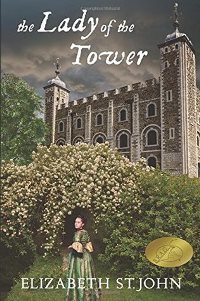 Following a failed love affair, she marries a kind man, but her choice ironically forces her into a role of uncomfortable prominence: that of mistress of the Tower of London, charged with caring for high-ranking political prisoners, including Sir Walter Raleigh… which means getting unwittingly drawn into the drama that surrounds them. The novel also emphasizes something I hadn’t thought much about: the huge monetary costs incurred by those occupying high-ranking positions in the realm.
Following a failed love affair, she marries a kind man, but her choice ironically forces her into a role of uncomfortable prominence: that of mistress of the Tower of London, charged with caring for high-ranking political prisoners, including Sir Walter Raleigh… which means getting unwittingly drawn into the drama that surrounds them. The novel also emphasizes something I hadn’t thought much about: the huge monetary costs incurred by those occupying high-ranking positions in the realm.
Another strong point are the depictions of Lucy’s relationships: her tender friendship with sister-in-law Anne; the growing antagonism between Lucy and her brother John, to whom Lydiard is entailed simply because he’s male; and her rivalry with her opportunistic sister Barbara, her polar opposite, who marries the half-brother of royal favorite George Villiers.
Most of the story unfolds against the political and cultural backdrop of the Jacobean age, which saw royal favorites jockeying for position and reward (and carrying their families’ hopes along with them), the financing of transatlantic voyages of exploration; and the growing influence of Calvinist theology. There are several complex love stories, too; and one love strongly echoing through the pages is that which Lucy has for the place she calls home.
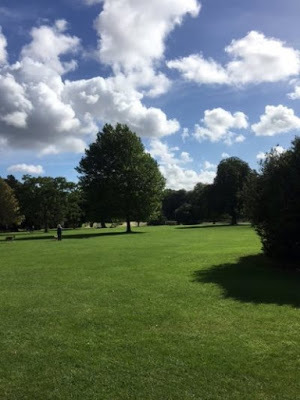 Grounds of Lydiard, Sept. 2016 (photo by me)
Grounds of Lydiard, Sept. 2016 (photo by me)
Elizabeth St. John's The Lady of the Tower was published in January 2016 on Kindle and in paperback.
Even with the crowds (and barking), Lydiard was a place of tranquility, with its beautifully landscaped grounds, nearby lake, and elegant Palladian country house dating from the Georgian era.
 Lydiard House on a beautiful September morning (photo by me)
Lydiard House on a beautiful September morning (photo by me)What I hadn’t known at the time was that Lydiard was the historic home of the St. John family, who had royal connections: they descended from Margaret Beauchamp, grandmother of Henry VII, through her first marriage. I also hadn’t realized that Lydiard featured in Elizabeth St. John’s The Lady of the Tower, which I’d purchased, coincidentally, on Kindle a few months earlier. I’m kicking myself now for not taking the opportunity to tour the house, which has many family portraits on the walls; likewise the walled garden, although mid-September wasn’t an ideal time for that. Hopefully we’ll get the chance to return someday.
Now that I’ve gotten the chance to read The Lady of the Tower, I can enthusiastically recommend it to anyone interested in the 17th century, the rich tapestry of women’s lives, or simply settling into a well-told, memorable historical novel. Spanning nearly three decades, from the sunset of the Elizabethan era through the early years of Charles I’s troubled reign as a “divine right” monarch, it follows the ups and downs in the life of Lucy St. John, youngest daughter in a prominent Wiltshire family (the author descends from this same family).
Lucy adores her quiet life in the English countryside; Lydiard is the home of her heart, but circumstances often oblige her to live elsewhere. Wherever Lucy resides, from Battersea along the Thames under the care of her spiteful aunt-by-marriage, to a stone castle in remote Wales, to the industriousness of the Royal Navy Yard, the settings are beautifully etched in the mind’s eye.
 St. Mary's parish church, Lydiard Tregoze (photo by Mark Johnson)
St. Mary's parish church, Lydiard Tregoze (photo by Mark Johnson)One principal theme is the plight of women in this earlier time. Dependent on their male relatives and husbands, they’re also expected to create homes for themselves and their children in places mostly not of their own choosing. Lucy's internal conflict between obligations and her personal desires is palpable, especially since she finds court manners empty of substance.
 Following a failed love affair, she marries a kind man, but her choice ironically forces her into a role of uncomfortable prominence: that of mistress of the Tower of London, charged with caring for high-ranking political prisoners, including Sir Walter Raleigh… which means getting unwittingly drawn into the drama that surrounds them. The novel also emphasizes something I hadn’t thought much about: the huge monetary costs incurred by those occupying high-ranking positions in the realm.
Following a failed love affair, she marries a kind man, but her choice ironically forces her into a role of uncomfortable prominence: that of mistress of the Tower of London, charged with caring for high-ranking political prisoners, including Sir Walter Raleigh… which means getting unwittingly drawn into the drama that surrounds them. The novel also emphasizes something I hadn’t thought much about: the huge monetary costs incurred by those occupying high-ranking positions in the realm. Another strong point are the depictions of Lucy’s relationships: her tender friendship with sister-in-law Anne; the growing antagonism between Lucy and her brother John, to whom Lydiard is entailed simply because he’s male; and her rivalry with her opportunistic sister Barbara, her polar opposite, who marries the half-brother of royal favorite George Villiers.
Most of the story unfolds against the political and cultural backdrop of the Jacobean age, which saw royal favorites jockeying for position and reward (and carrying their families’ hopes along with them), the financing of transatlantic voyages of exploration; and the growing influence of Calvinist theology. There are several complex love stories, too; and one love strongly echoing through the pages is that which Lucy has for the place she calls home.
 Grounds of Lydiard, Sept. 2016 (photo by me)
Grounds of Lydiard, Sept. 2016 (photo by me)Elizabeth St. John's The Lady of the Tower was published in January 2016 on Kindle and in paperback.
Published on September 16, 2017 05:00
September 13, 2017
Mary Miley's Murder in Disguise, a mystery of 1920s Hollywood
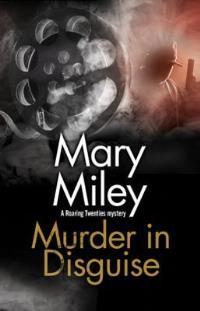 The freshness of Jessie Beckett’s narrative voice remains undimmed even after four books. In her latest excursion into amateur detection, set mostly in 1920s Hollywood, Jessie, assistant script girl at Pickford-Fairbanks Studios, investigates the murder of a film projectionist.
The freshness of Jessie Beckett’s narrative voice remains undimmed even after four books. In her latest excursion into amateur detection, set mostly in 1920s Hollywood, Jessie, assistant script girl at Pickford-Fairbanks Studios, investigates the murder of a film projectionist.A man in a red jacket had sprung into the Lyceum Theater’s projection booth during a Charlie Chaplin film and gunned down Joe Petrovitch, with his shocked assistant looking on. The killer then somehow vanished.
The crime has the markings of a theatrical production, given the perpetrator’s showy clothing, but it could also have been a gangster hit. Joe’s widow, Barbara, one of Jessie’s work colleagues, knows of her crime-solving reputation and requests her help—and in a welcome surprise, a former acquaintance, LA police officer Carl Delaney, agrees to their partnership.
Barbara knows little of Joe’s past, although he was an unpleasant bastard by all accounts, with a history leading back to pre-WWI Europe. Discovering connections sends Jessie around the city and back to her old haunts elsewhere in America.
Jessie’s love life gets put on hold, with her regular fella in legal trouble, which means some new plot directions. Although attracted to Jessie, Carl’s too much the gentleman to push his advantage. Life at Jessie’s boardinghouse also gets shaken up with the arrival of a roommate’s deaf younger cousin, a sullen girl whose quiet cleverness makes her a wonderful character. As a former vaudevillian, Jessie knows all about disguises, so she has ideas on how the killer concealed himself in plain sight. Strangely, she still misses one important clue. I suppose even talented sleuths have off-days.
As always, the Roaring ‘20s atmosphere, from the exciting invention of Technicolor to efforts to curb bootlegging, is worth the price of admission. Because it reveals aspects of previous books’ storylines, though, best not to read this one first.
Murder in Disguise (which I reviewed for the HNR in August) was published by Severn House in August. I recommend all of the books in this series, which begins with The Impersonator , then followed by Silent Murders, Renting Silence , and finally this newest entry. Start at the beginning to learn more about the heroine's family background and how she came to be known as Jessie.
Published on September 13, 2017 05:00
September 8, 2017
A gallery of Gothic historical novels, or, what to read while waiting for Kate Morton's next book
Australian novelist Kate Morton's novels bridge genres: they're multi-period family sagas carefully layered with mysteries from the past, some romance, and often an old house at the center. I'm a big fan, one of many from around the world. All five of her books have been international bestsellers, and she recently posted about her upcoming book #6 on her Facebook page.
Gothic novels formed a good part of my reading as a young adult, and then the genre fell out of favor for years, only to be revived in the early 21st century -- with Morton as one of its foremost practitioners. She has helped bring these books back into the mainstream. Given the complexity of her novels, she can only write so quickly, but readers who crave books featuring similar elements have plenty to choose from. Below are 12 "readalikes" for her work.
This is the first in a new series of thematic lists of historical novels (with some recommendations of titles from other genres mixed in), all written with the intent of introducing readers to new and intriguing-sounding books. Unlike many earlier lists, I'm including both new and older titles.
Please let me know what you think, and if there are any other subjects or themes for which you'd like recommendations!
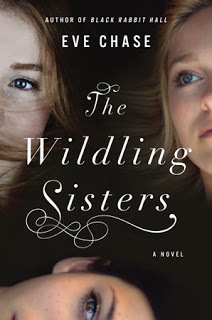
Four sisters, the aftermath of their cousin's disappearance, and a modern family who stumbles upon the 50-year-old mystery after arriving at Applecote Manor in the Cotswolds.
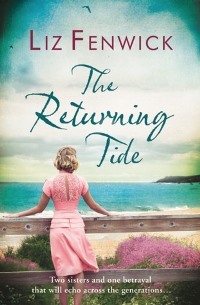
What factors destroyed the once-close relationship between Cornish twins Adele and Amelia as they came of age in the war-torn 1940s? The answers are left to their descendants to find out.
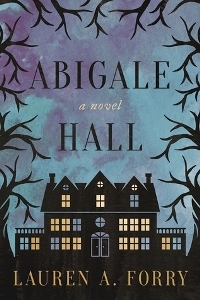
This creepy historical novel set in the post-WWII Welsh countryside features two young women facing hard times, a mansion reputed to be haunted, and horrifying secrets from the past.

In this atmospheric historical Gothic set in the Norfolk Broads in the early 19th century, a young woman facing destitution encounters a mysterious stranger in the marshes one foggy night.
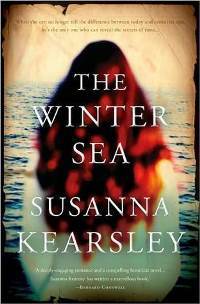
A historical novelist researching the Jacobites in early 18th-century Scotland discovers unexpected truths in her fictional storyline. Kearsley, of course, has been writing romantic mysteries with "twin-stranded storylines" (the phrase used for her HNS conference workshop on the topic) for over 20 years, so newcomers to her work have an extensive backlist to investigate.
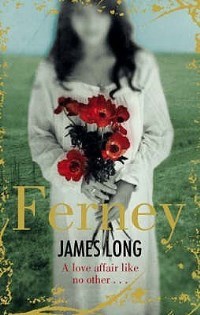
A novel of reincarnation, layers of folk memory, and a mysteriously possessive form of love that stretches back through many centuries of English country history.
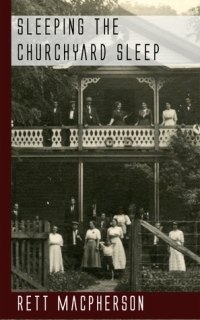
In 1950s West Virginia, Olivia VanBibber and her brother bring a plate of their great-aunt's fried chicken to a newly arrived stranger and get pulled unexpectedly into a haunting genealogical mystery.
Rett MacPherson has also written the Torie O'Shea contemporary mystery series, many of which feature family secrets (my favorite is The Blood Ballad, which is as creepy as all get-out).
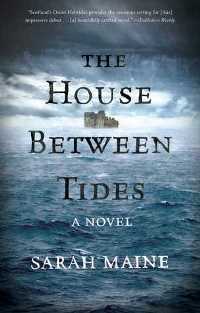
A decrepit, isolated mansion in Scotland's Outer Hebrides, a woman with an unexpected inheritance, and a skeleton whose presence unearths a mystery about Muirlan House's former inhabitants.
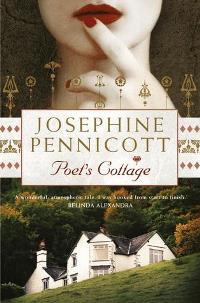
What happened in the grisly cellar in Poet's Cottage in remote Tasmania eighty years ago? Australian writer Josephine Pennicott writes Gothic mysteries with a bohemian edge.

In 1924, the death of her uncle Toby, a ghost hunter, compels an Oxford student to travel to Rothewell, a small town by the sea, to investigate what happened. Readers of St. James's novels may find an occasional ghost or two within the pages.
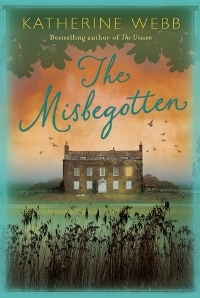
Three of Katherine Webb's novel have been published in the US, and she's continued to write others for the UK market, including this one. The Misbegotten is an evocative period Gothic set in Bath in 1821, opening with a young woman seeing eerie portents on her wedding day.
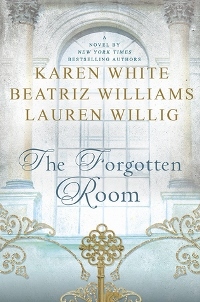
A secret room in an elegant Gilded Age mansion, a portrait, and a ruby necklace are linked through three generations of women in this smoothly written, multi-period Gothic by a trio of popular authors.
Gothic novels formed a good part of my reading as a young adult, and then the genre fell out of favor for years, only to be revived in the early 21st century -- with Morton as one of its foremost practitioners. She has helped bring these books back into the mainstream. Given the complexity of her novels, she can only write so quickly, but readers who crave books featuring similar elements have plenty to choose from. Below are 12 "readalikes" for her work.
This is the first in a new series of thematic lists of historical novels (with some recommendations of titles from other genres mixed in), all written with the intent of introducing readers to new and intriguing-sounding books. Unlike many earlier lists, I'm including both new and older titles.
Please let me know what you think, and if there are any other subjects or themes for which you'd like recommendations!

Four sisters, the aftermath of their cousin's disappearance, and a modern family who stumbles upon the 50-year-old mystery after arriving at Applecote Manor in the Cotswolds.

What factors destroyed the once-close relationship between Cornish twins Adele and Amelia as they came of age in the war-torn 1940s? The answers are left to their descendants to find out.

This creepy historical novel set in the post-WWII Welsh countryside features two young women facing hard times, a mansion reputed to be haunted, and horrifying secrets from the past.

In this atmospheric historical Gothic set in the Norfolk Broads in the early 19th century, a young woman facing destitution encounters a mysterious stranger in the marshes one foggy night.

A historical novelist researching the Jacobites in early 18th-century Scotland discovers unexpected truths in her fictional storyline. Kearsley, of course, has been writing romantic mysteries with "twin-stranded storylines" (the phrase used for her HNS conference workshop on the topic) for over 20 years, so newcomers to her work have an extensive backlist to investigate.

A novel of reincarnation, layers of folk memory, and a mysteriously possessive form of love that stretches back through many centuries of English country history.

In 1950s West Virginia, Olivia VanBibber and her brother bring a plate of their great-aunt's fried chicken to a newly arrived stranger and get pulled unexpectedly into a haunting genealogical mystery.
Rett MacPherson has also written the Torie O'Shea contemporary mystery series, many of which feature family secrets (my favorite is The Blood Ballad, which is as creepy as all get-out).

A decrepit, isolated mansion in Scotland's Outer Hebrides, a woman with an unexpected inheritance, and a skeleton whose presence unearths a mystery about Muirlan House's former inhabitants.

What happened in the grisly cellar in Poet's Cottage in remote Tasmania eighty years ago? Australian writer Josephine Pennicott writes Gothic mysteries with a bohemian edge.

In 1924, the death of her uncle Toby, a ghost hunter, compels an Oxford student to travel to Rothewell, a small town by the sea, to investigate what happened. Readers of St. James's novels may find an occasional ghost or two within the pages.

Three of Katherine Webb's novel have been published in the US, and she's continued to write others for the UK market, including this one. The Misbegotten is an evocative period Gothic set in Bath in 1821, opening with a young woman seeing eerie portents on her wedding day.

A secret room in an elegant Gilded Age mansion, a portrait, and a ruby necklace are linked through three generations of women in this smoothly written, multi-period Gothic by a trio of popular authors.
Published on September 08, 2017 04:00



